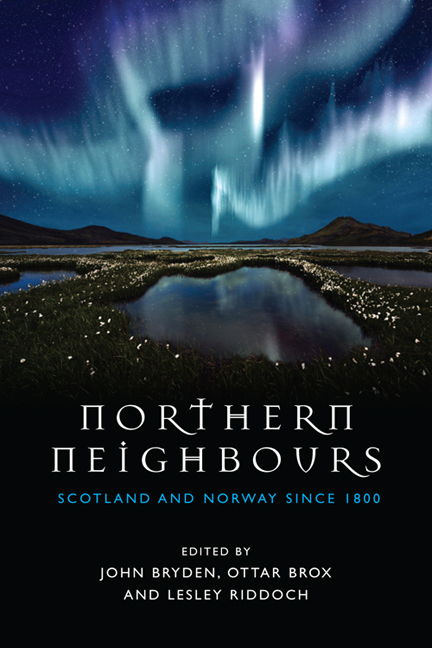Book contents
- Frontmatter
- Contents
- Acknowledgements
- Foreword
- 1 Introduction
- 2 Towards a Theory of Divergent Development
- 3 Cousins Divided? Development in and of Political Institutions in Scotland and Norway since 1814
- 4 Agrarian Change in Scotland and Norway: Agricultural Production, Structures, Politics and Policies since 1800
- 5 The Evolution of Local Government and Governance in Scotland and Norway
- 6 The Development of Industry and North Sea Oil in Scotland and Norway
- 7 Reflections on the Making of Norway
- 8 Money and Banking in Scotland and Norway
- 9 Religion in Scotland and Norway
- 10 The Nordic Welfare Model in Norway and Scotland
- 11 Access, Nature, Culture and the Great Outdoors – Norway and Scotland
- 12 Education in Norway and Scotland: Developing and Re-forming the Systems
- 13 Norway and the United Kingdom/Scotland after the Second World War
- 14 Conclusions
- The Contributors
- Bibliography
- Index
11 - Access, Nature, Culture and the Great Outdoors – Norway and Scotland
Published online by Cambridge University Press: 05 August 2016
- Frontmatter
- Contents
- Acknowledgements
- Foreword
- 1 Introduction
- 2 Towards a Theory of Divergent Development
- 3 Cousins Divided? Development in and of Political Institutions in Scotland and Norway since 1814
- 4 Agrarian Change in Scotland and Norway: Agricultural Production, Structures, Politics and Policies since 1800
- 5 The Evolution of Local Government and Governance in Scotland and Norway
- 6 The Development of Industry and North Sea Oil in Scotland and Norway
- 7 Reflections on the Making of Norway
- 8 Money and Banking in Scotland and Norway
- 9 Religion in Scotland and Norway
- 10 The Nordic Welfare Model in Norway and Scotland
- 11 Access, Nature, Culture and the Great Outdoors – Norway and Scotland
- 12 Education in Norway and Scotland: Developing and Re-forming the Systems
- 13 Norway and the United Kingdom/Scotland after the Second World War
- 14 Conclusions
- The Contributors
- Bibliography
- Index
Summary
INTRODUCTION: A RIGHT TO ROAM?
Norway and Scotland are North Sea neighbours with a similar population, geology and landscape. However, their inhabitants have had very different experiences of nature and access to the outdoors through education, sport, leisure and the use of weekend huts and wooden cabins.
Both countries have ‘right to roam’ laws, mountain bothies, National Parks and a tradition of distinctive winter sports. Dig deeper, though, and differences quickly appear.
Norway has forty-three National Parks, the first established in 1962. Scotland has two National Parks, the first established in 2002, and neither Scottish park is a wilderness area owned by the government. This example sets a theme that crops up in almost every comparison of nature and outdoor access in Scotland and Norway. Formal rights of access to the outdoors in Scotland have typically occurred half a century later than in Norway, have been less far-reaching and have not changed or challenged the dominance of private sporting estates.
The Norwegians have always practised allemannsretten or ‘freedom to roam’. In 1957, this was codified into an Outdoor Recreation Act giving the public rights of access to hike in the mountains, camp overnight, cycle on tracks and ski in forests during the winter – though not closer than 150 metres to any inhabited dwelling.
It took half a century longer for Scots to gain much the same package of legal access rights. Before that, Scots had the same long-standing belief in their traditional and informal ‘right to roam’, insisting trespass and ‘Private – Keep Out’ signs had no basis in Scots law. Some landowners – especially incomers with a different legal experience from south of the border – contested these customary rights, and during the foot and mouth outbreak of 2001 farmers were accused of closing the countryside for longer than necessary. Nordic-style access laws were finally adopted in 2003 to resolve such disputes as part of the Land Reform (Scotland) Act. Yet despite this apparently similar customary and legal framework, the proportion of people actually using the outdoors today in Norway and Scotland is very different.
- Type
- Chapter
- Information
- Northern NeighboursScotland and Norway since 1800, pp. 230 - 249Publisher: Edinburgh University PressPrint publication year: 2015



